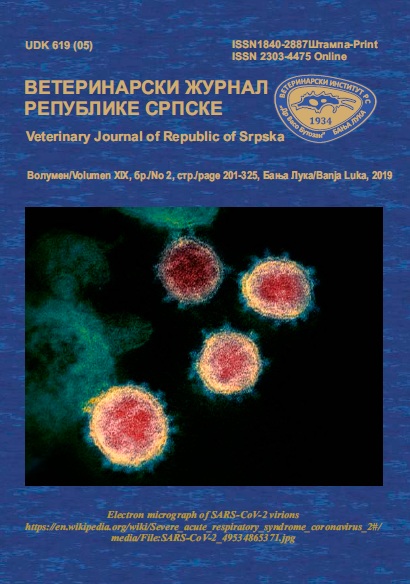THE IMPORTANCE OF DIFFERNTIAL DIAGNOSIS OF RESISTANCE AND RESILIENCE IN RUMINANTS
DOI:
https://doi.org/10.7251/VETJEN1902240IAbstract
Control of the gastrointestinal parasites in different systems of ruminant breeding is based on vaccination, chemotherapy, improved herd management and use of genetic potentials of host animals. Strategy of the helminths control based on frequent anthelmintics usage is dominant among the world, although it is considered unsustainable due to the appearance of increased number and species of parasites that are resistance to drugs. Development of resistance on all three groups of broad-spectrum antihelmintics (nicotinic anthelmintics, benzimidazoles and macrolides lactones) as well as increased care for consumers heath caused by appearance of used drugs residues in food, additionally complicate overall nematode control. With the aim to decrease appearance of anthelmintics resistance of gastrointestinal nematodes of small ruminants and in order to organize process of sustainable integrated parasite management, principle of targeted selective treatment is globally accepted. Implementing of this strategy has only recently become feasible, with development and practical use of systems that serve for clinical assessment of anemia in small ruminants which suffer from hemonchosis. Besides that, short term changes in body weight and body condition scoring may be indicators of diseases caused by endoparasites, as it can provide rapid identification of animals that will probably have benefits from therapy. Obtained results of quantitative coprological diagnostic tests and results for anemia assessment are criteria that provide differential diagnosis between healthy and resilient animals and easier diseases diagnostic. Since resilient animals play important role in pasture contamination, the significance of their detection is understandable.Downloads
Published
2020-05-03
Issue
Section
Енглески

